Judging by this 45 year old camp counselor’s excitement, Fizzing Hatching Dino Eggs are the best dinosaur science activity for young paleontologists!
This post is sponsored by Arm & Hammer. All opinions are my own.
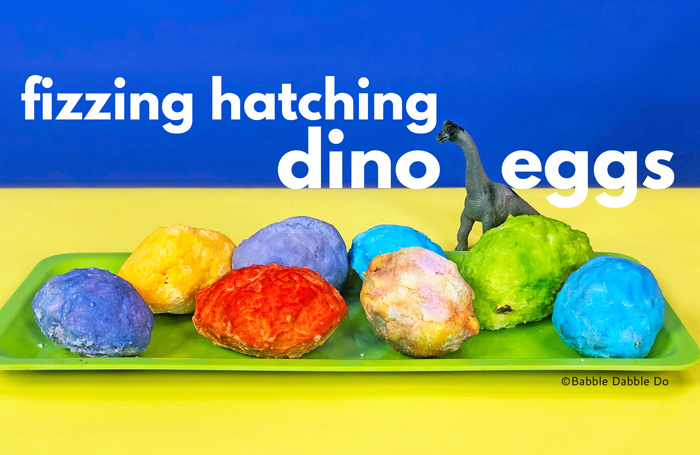
Years ago I went to a lot of trouble to make dino eggs for my son’s birthday. They took me a week to prepare and dry and while they were fun, I wish I’d had this recipe then! The colorful eggs and fizzing sounds made hatching them are completely irresistible to kids.
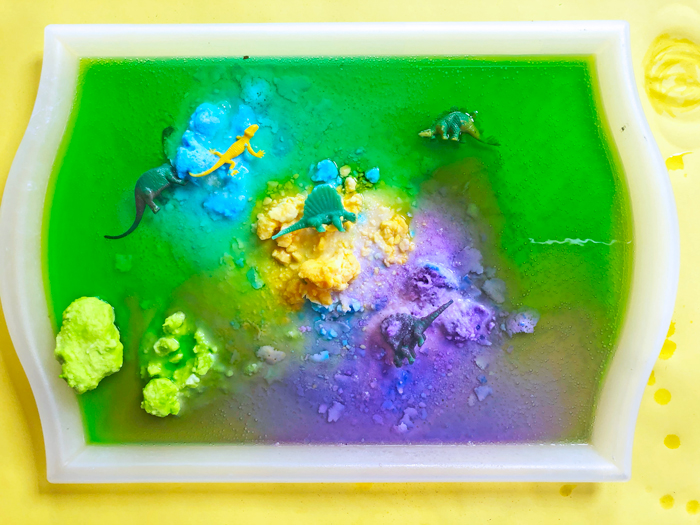
Today’s project is the last science experiment of Arm & Hammer Summer Camp, a great summer resource that I’ve had the pleasure of being the science counselor for! To see the previous projects this week go here:
Fizzing Hatching Dino Eggs
Downloadable directions here
Materials
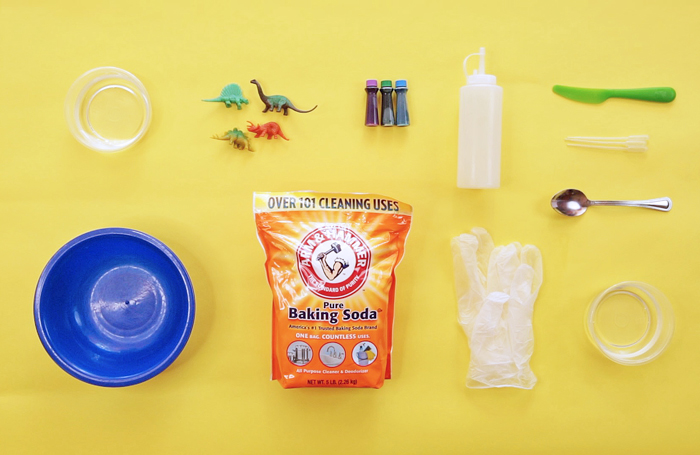
- 1 cup of ARM & HAMMER™ Baking Soda per egg
- 1-2 Cups Vinegar
- Miniature dinosaur toys
- Large bowls
- 1/4- 1/3 cup water per egg
- Food coloring
- Spray bottle for vinegar (optional)
- Rubber gloves (optional)
- Cookie Sheet or Tray
Instructions
Time needed: 30 minutes + overnight drying time
- Make the dough
Pour ARM & HAMMER™ Baking Soda in a bowl. Add several drops of food coloring to a cup of water. Slowly add water in small amounts to the baking soda and mix until a doughy consistency is reached; mixture should be damp and mold-able but not too wet.

- Make the eggs
Wear gloves to prevent your hands from being stained with food coloring. Scoop some dough into your hand, then lay the dinosaur toy on top. Cover the dinosaur with more baking soda mixture and form it into an egg shape, with the dinosaur hidden inside.

- Let dry
Lay your eggs on a tray or baking sheet to dry for a few hours or overnight.

- “Hatch” the eggs!
Pour vinegar into a small cup or into a squeeze bottle. Place one of the eggs on a large tray or cookie sheet. Squeeze or pour vinegar on top of the egg and watch the reaction as the eggs dissolve.

- Hatch more eggs
Continue dissolving more eggs eggs until the miniature dinosaurs inside are hatched!

Tips/Suggestions:
- Personalize these to your child’s interest. If your child loves ocean animals or even toy cars, swap them out for the dinosaurs.
- If you don’t have a squeeze bottle, try reusing an empty condiment bottle.
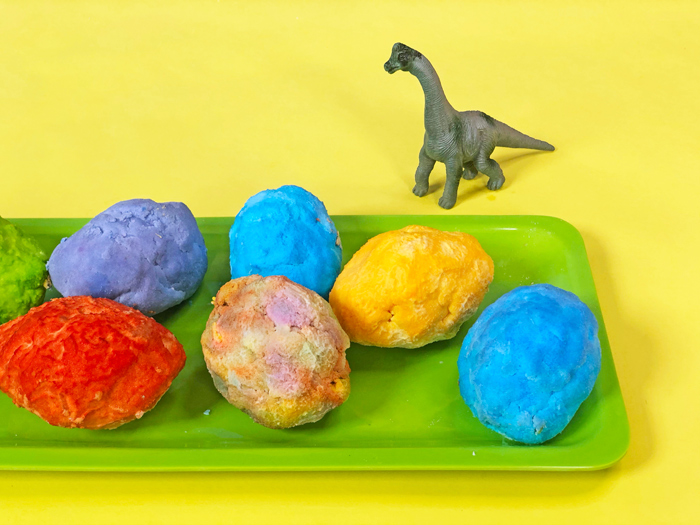
The science behind this activity
If you have been following along with the science projects in camp this week, you’ll know that today’s dinosaur science activity is another example of the classic vinegar and baking soda chemical reaction. When baking soda, AKA sodium bicarbonate, and vinegar, AKA acetic acid, come into contact a chemical reaction occurs.
Part of this reaction involves the decomposition of carbonic acid which results in carbon dioxide. When you squeeze vinegar on top of the baking soda eggs the acetic acid reacts with the sodium bicarbonate to dissolve the eggs. The fizzing you hear and all the bubbles you see in the vinegar are the carbon dioxide bubbles being produced in this chemical reaction.
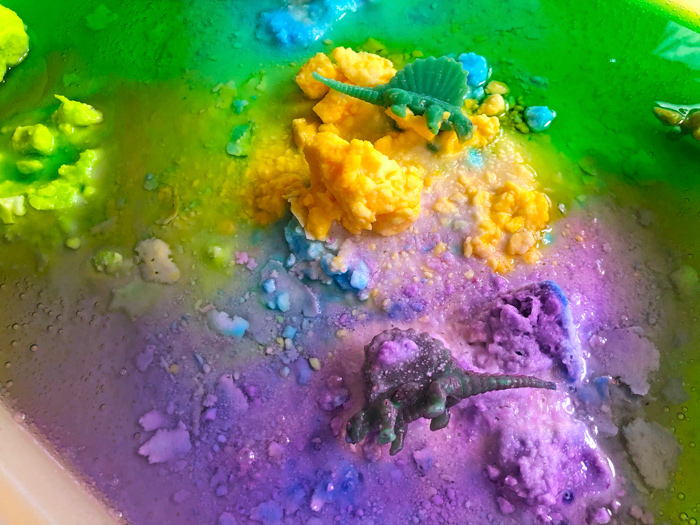
Conclusion
I had, I mean my kids had, so much fun with this dinosaur science activity! It truly is full of sensory magic and a wonderful science based play activity for dinosaur loving kids. And though it may seem like it’s only for younger kids, no child can resist hatching these eggs with the help of science!
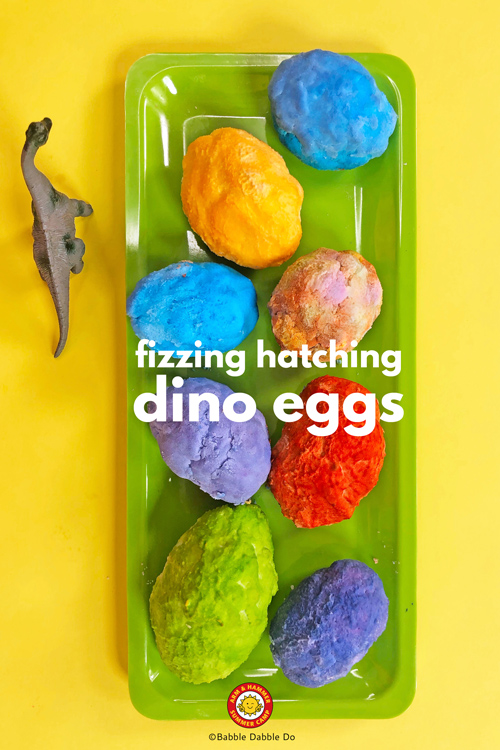
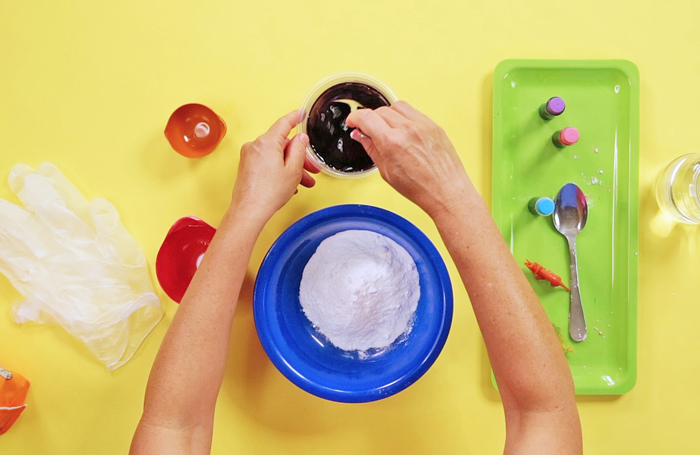
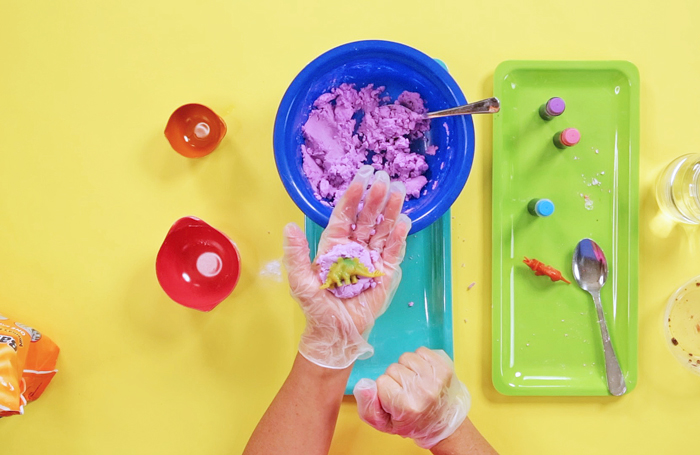
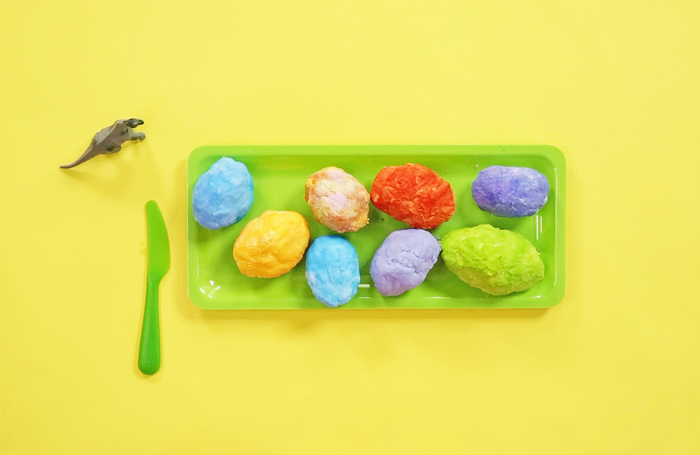
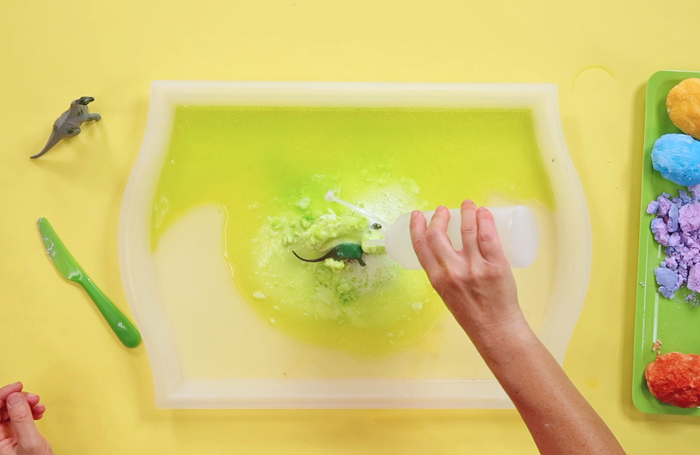
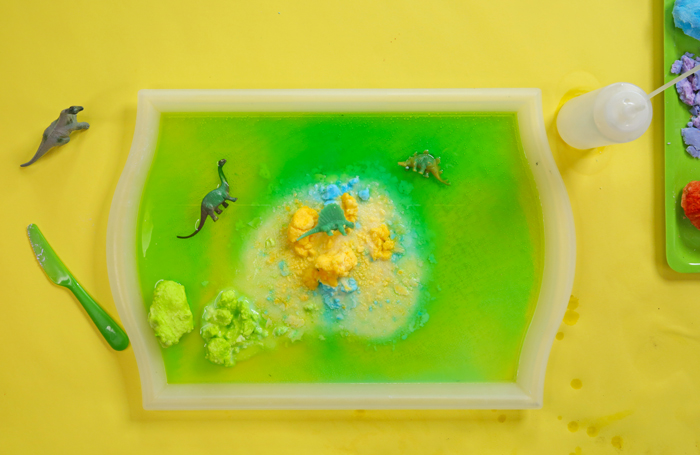
Leave a Reply